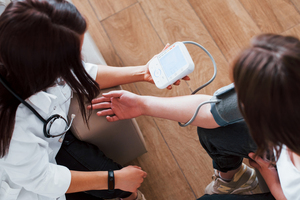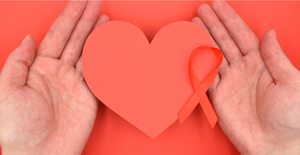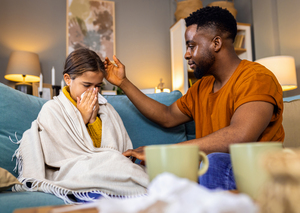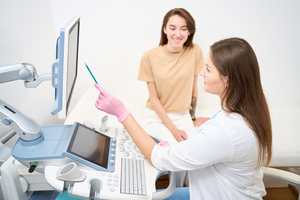Wart Removal
Warts that are unsightly or grow in uncomfortable places can often be removed by a dermatologist or skin care doctor. Knowing more about your options for warts treatment can empower you to find a quality dermatologist in your area who offers safe, effective wart removal services.
All about warts
Warts are benign skin growths that can show up anywhere on the body. They usually grow on your hands, but may also grow on your feet and face, reports the National Institutes of Health (NIH).
The NIH says that warts result from the human papillomavirus (HPV). According to the NIH, they can spread from an infected person to another person by contact, especially during sex. There are many different types of warts, each of which grows in certain places of the body. Warts can vary in color, size, and texture and can sometimes be painful.
Warts can be removed using over-the-counter medicines, prescription medications, and laser treatment. Freezing, burning, and immunotherapy are other common ways to remove warts, according to the NIH. Your dermatologist can discuss all your available wart removal methods based on the type and location of your wart.
What are the types of warts?
Warts can grow anywhere but are most commonly found on the hands. Your skin care doctor can usually examine your wart to determine its type. A proper diagnosis can help your dermatologist choose the right removal treatment.
Common warts
According to the NIH, common warts often grow on your hands but can appear anywhere. Harvard Medical School adds that common warts are usually raised and have a rough surface. They range in color from gray to brown and sometimes have dark specks in them. Warts on hands under the fingernails can be more difficult to treat than others, says Harvard Medical School.
Plantar warts
Plantar warts are the most common type of warts on feet. They are usually found on the soles of feet and can cause great pain—especially when walking or running. Harvard Medical School reports that Plantar warts have rough and spongy surfaces that become flattened due to walking.
Flat warts
Flat warts can grow on the hands, shins, and face, including on the forehead. The NIH says these warts are most common among children. Flat warts tend to be smooth, pink, and smaller than other warts.
Filiform warts
Warts on the neck, eyelids, and lips are known as filiform warts. According to the University of Rochester, these warts are small, long, narrow, and have finger-like projections.
Periungual warts
Periungual warts are growths of thickened skin. According to the NIH and the University of Rochester, these warts tend to grow around the fingernails and toenails.
Important information about genital warts
Genital warts grow in the genital region, including on the rectum and inside the vagina, reports the NIH. The University of Michigan adds that these warts are highly contagious and usually only transmitted sexually. Genital warts can be difficult to treat and should not be treated at home. The University of Michigan suggests consulting with your doctor if you want genital warts removed.
Wart removal
There are many types of wart removal methods. Warts that do not go away on their own can be treated with over-the-counter medicines or by a skin care doctor specializing in wart removal, notes the NIH.
At-home treatment
All warts except genital warts can be treated at home using salicylic acid liquid or plasters, reports the University of Michigan. These over-the-counter products and kits are available without a prescription.
Follow the package directions closely to remove your wart safely. In most cases, you will be required to cover the wart with duct tape for two to three days, soak the wart in warm water, then scrape it away using a pumice stone or metal file until it disappears, according to the University of Michigan reccomendations.
Freezing treatments
Freezing treatments for warts are also known as cryotherapy. According to the University of Michigan, cryotherapy involves applying liquid nitrogen to the wart. This will destroy the wart and cause it to blister, which resolves on its own after several days.
Treatments and patches containing salicylic acid
Salicylic acid is usually used to remove Plantar warts, reports the University of Michigan. This treatment involves using a 40% salicylic acid plaster that is cut to the size and shape of the wart. Duct tape is used to secure the plaster to your wart for 24 hours, after which your wart can be filed down. Wart removal products containing salicylic acid can be purchased without a prescription and used at home.
Duct tape
Duct tape may be used on its own to remove a wart even without salicylic acid, reports the University of Michigan. This wart removal method is the same as that for treatments using salicylic acid but involves no application of liquid or plaster.
What can my doctor do about warts?
A skin care doctor or dermatologist may remove warts that cannot be removed at home using over-the-counter treatments or duct tape. Consult with your doctor for more information about available treatment options based on your type of wart.
Liquid nitrogen
Liquid nitrogen treatment for a wart is also known as cryotherapy or freezing. During this treatment, your doctor will apply liquid nitrogen to the wart, which causes it to freeze and blister, according to the University of Michigan. The blister usually resolves on its own within a few days of treatment.
Surgery
Surgery can be used to remove warts that won’t respond to other treatments. According to Alfred University, warts may be removed with laser surgery and excision using a sharp knife or scalpel.
Can warts be prevented?
Warts can be prevented by avoiding coming into contact with someone who has HPV, reports the NIH. Other steps you can take to prevent warts include:
- Washing your hands thoroughly after coming into contact with a wart.
- Avoiding direct contact with a wart on someone else’s skin.
- Wearing socks and shoes to prevent Plantar warts, especially in public places like gyms, saunas, and swimming pools.
- Wearing condoms to reduce the transmission of genital warts.
- Washing the nail file you use to treat warts to prevent warts from spreading to other parts of your body.
- Getting vaccinated for HPV so you can avoid getting warts.
Find Wart Removal near you
- Alabama
- Alaska
- Arizona
- Arkansas
- California
- Colorado
- Connecticut
- Delaware
- Florida
- Georgia
- Hawaii
- Idaho
- Illinois
- Indiana
- Iowa
- Kansas
- Kentucky
- Louisiana
- Maine
- Maryland
- Massachusetts
- Michigan
- Minnesota
- Mississippi
- Missouri
- Montana
- Nebraska
- Nevada
- New Hampshire
- New Jersey
- New Mexico
- New York
- North Carolina
- North Dakota
- Ohio
- Oklahoma
- Oregon
- Pennsylvania
- Rhode Island
- South Carolina
- South Dakota
- Tennessee
- Texas
- Utah
- Vermont
- Virginia
- Washington
- Washington DC
- West Virginia
- Wisconsin
- Wyoming
Wart Removal FAQs
What is a wart?
Warts are benign and painless skin growths that usually appear on the hands, though they can grow anywhere on the body, reports the NIH. Warts are caused by HPV and can be spread when you come into direct contact with a wart on an infected person. Warts that are unsightly and uncomfortable can often be effectively removed by a skin care doctor or dermatologist.
How do I identify a wart?
Warts are usually raised and feel rough to the touch, says the NIH. They are often round or oval. Warts can look different from one another based on their type. Warts can be light or dark in color and flat or raised. Some may be painful, especially those that grow on your feet. Your doctor can examine any skin growth to confirm whether it is a wart.
Are warts dangerous?
Most warts are benign, which means they are not harmful to your health. However, the NIH says some doctors may perform a biopsy on your wart to determine whether it may be skin cancer. Though warts are not dangerous, they can be painful, uncomfortable, and unsightly—why some people choose to have them removed.
What are warts caused by?
Warts are caused by HPV, says the NIH. It adds that there are more than 150 strains of HPV that can cause warts. If you do not have HPV, you can get warts by coming into direct contact with the wart of someone infected with this virus. Genital warts can spread by having sex with an infected person.
How do I treat warts?
Warts can be effectively treated with over-the-counter products that contain salicylic acid, or with duct tape, reports the University of Michigan. Your dermatologist can also treat warts using methods including freezing, burning, surgery, laser treatment, immunotherapy, and medications, adds the NIH. Your skin care doctor can examine your wart and recommend the best removal treatment.
How do warts spread?
Warts can spread in many ways, such as when you come into direct contact with a wart on a person infected with HPV or when you use a contaminated nail file on another part of your body, reports the NIH. Plantar warts can spread when you expose your feet to contaminated surfaces, such as those at the swimming pool or gym.
Where can I get a wart removal treatment near me?
Type “dermatologist near me” into your search engine to find a nearby doctor who offers this service, or use Solv to browse top-rated dermatologists in your area. Solv features a directory of only the highest-rated providers, so you can conveniently access quality healthcare services with just a few clicks. Solv also gives you the ability to schedule a same-day appointment directly from its website.
Solv has strict sourcing guidelines and relies on peer-reviewed studies, academic research institutions, and medical associations. We avoid using tertiary references.
Everyday Healthcare, Simplified
Expert advice to help you live your best life








